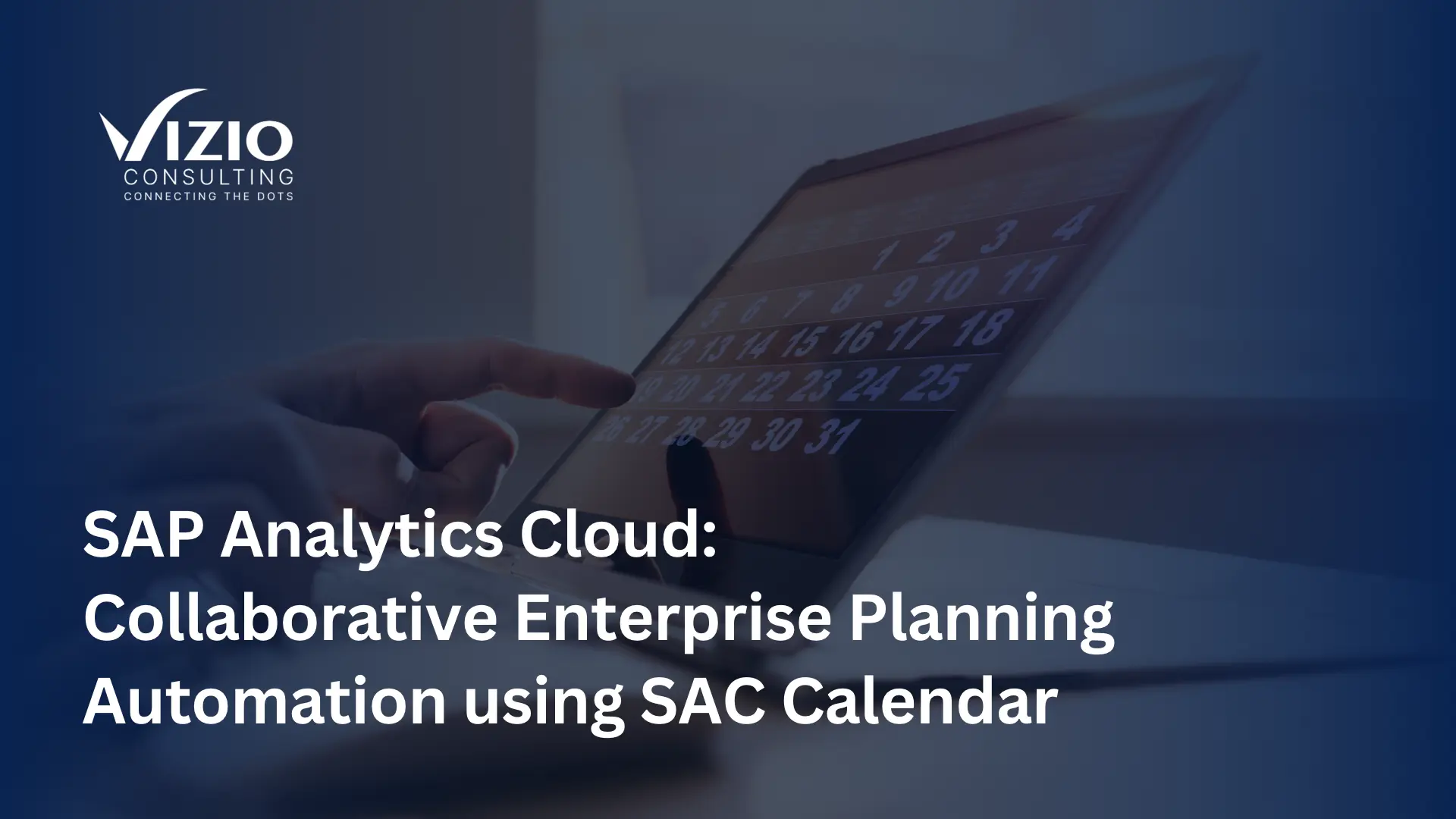In the dynamic world of business, efficient planning and informed decision-making are crucial for organizations to thrive. With the ability to automate collaborative corporate planning, SAP Analytics Cloud (SAC) has emerged as a ground-breaking technology.
One noteworthy aspect of SAC is its Calendar module, which fosters cooperation while simultaneously enhancing data visibility and facilitating effective planning.
In this article, we’ll examine how SAC Calendar can unite teams and provide them with the capacity to make educated decisions that lead to success.
Before we dive in, let us understand the basics.
Collaborative Enterprise Planning is the process of engaging multiple teams and departments within an organization to create cohesive and unified plans. Its goals are to promote cooperation, destroy silos, and make sure that everyone collaborates to achieve common goals.
SAC Calendar:
The Driving Force for Cooperation and Effectiveness
The SAC Calendar module is a flexible planning tool that promotes coordinated actions and alignment with corporate goals. It does away with the necessity for jumbled spreadsheets and scattered planning initiatives. SAC Calendar provides a thorough perspective of corporate operations by combining planning data and promoting cooperation and visibility across departments and functions.
Collaborative technologies like the SAC Calendar module and the integration of various planning features enable collaborative enterprise planning in SAP Analytics Cloud (SAC). Teams may successfully cooperate, exchange information, and synchronise their planning efforts thanks to the centralised platform provided by SAC. Organizations can create a unified planning environment where collaboration flourishes, information is exchanged easily, and planning activities are coordinated by utilizing SAC’s strengths.
Easy Collaboration: SAC Calendar makes it possible for teams to communicate and collaborate with one other in a straightforward manner, which promotes a feeling of unity and purpose. It makes it possible to create and assign tasks, specify due dates, and monitor progress on a single platform. As a result, there is no longer any need for continuous email correspondence, and everyone is informed and on the same page.
Improved Data Visibility: The SAC Calendar gives stakeholders a clear view of scheduled actions and the data they are connected with, giving them a complete picture of ongoing efforts. Teams can efficiently identify dependencies, settle disputes, and optimise resource allocation thanks to this openness. Everyone is kept aware of changes in real time through updates and notifications, reducing bottlenecks and delays in the planning process.
Making Planning More Effective Using SAC Calendar
The SAC Calendar module acts as a catalyst, bringing teams together and enabling seamless collaboration for efficient planning and automation.
Let’s now explore the main SAC Calendar features that help streamline planning procedures and promote automation inside businesses.
- Drag-and-Drop Functionality: SAC Calendar has a simple user interface that makes it simple for users to add, edit, and rearrange activities. Planners may modify schedules, distribute resources, and respond in real time to shifting priorities with a simple drag-and-drop operation. This adaptability improves agility and enables teams to react quickly to changes in the market.
- Seamless Integration with Business Processes: SAC Calendar seamlessly connects with other planning tools inside SAC, including the workforce, sales, and financial planning tools. Decision-makers get a full and unified perspective thanks to this seamless integration, which compiles data from several sources into a single platform. SAC Calendar encourages cross-functional collaboration and helps well-rounded decision-making processes by tying these many planning components together.
- Utilizing Advanced Analytics: SAC Calendar offers extensive analytics capabilities, going beyond simple task management. Teams may now analyse data in the context of pre-planned activities thanks to this. For instance, teams may evaluate the effect of marketing initiatives on revenue estimates by visualising sales projections alongside marketing campaign schedules. Organisations may match their planning strategies with intended results thanks to this data-driven approach, which enables them to make well-informed choices based on data.
- Centralized Planning Data: The SAC Calendar compiles planning information from several departments, acting as a dependable and consistent source of information for all parties. As a result, everyone operates with accurate and current data, eliminating the need for dispersed spreadsheets and fragmented planning techniques.
- User-Friendly Interface: SAC Calendar’s interface was created with user comfort in mind, making planning and task management easier. Through simple drag-and-drop capabilities, planners may simply create, amend, and rearrange activities. A flawless planning experience is guaranteed by user-friendly design and navigation.
The Bottom Line
In today’s rapidly changing business environment, effective collaboration and operational efficiency are crucial for success. The SAP Analytics Cloud (SAC) Calendar module enables businesses to improve planning efficiency and capitalise on the advantages of teamwork. SAC Calendar lets teams work together smoothly, make informed choices, and promote overall corporate performance by centralising planning data, enhancing visibility, and offering user-friendly features.
Your planning processes might undergo a striking metamorphosis if you use SAC Calendar’s collaborative corporate planning automation features. It’s time to say goodbye to fragmented spreadsheets and hello to a comprehensive and effective method of planning. With SAC Calendar, your business can realise its full potential, seize opportunities, and keep a step ahead of the competition.

